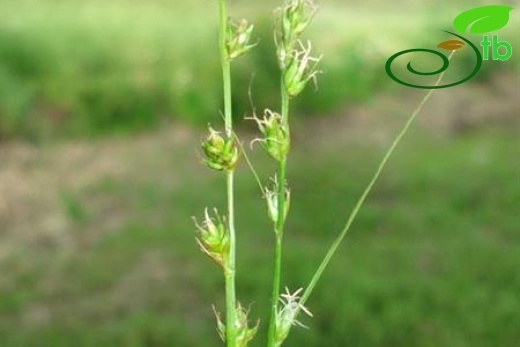Carex divulsa
Carex divulsa
Ayakotu
Similar to C. spicata but laxly caespitose; roots dark brown to blackish; stems to I m; basal sheaths becoming dark brown or blackish and strongly fibrous; leaves 2-5.3 mm broad, slightly shorter than stems; ligule obtuse to almost acute, c. as broad as long or somewhat broader; inflorescence 3-15 cm; upper spikes almost confluent, 1-3 lower ones usually distant and more than their own length apart, often branched at base; female glumes c. as long as utricles; utricles pale yellowish-brown to dark brown, narrowly ovate to ovateelliptic or ahnost orbicular, 3.3-5.8 mm, rather distinctly veined or veinless, base rounded to ahnost cuneate, not spongy or thickened, apex narrowed into a usually scabrid-margined beak.
1. Utricles broadly ovoid to almost orbicular, rounded at base, distinctly flanged at margins, usually rather pale yellowish-brown, usually distinctly veined at least on back; apex abruptly contracted into short beak subsp. coriogyne
1. Utricles narrowly ovate to ovate-elliptic, usually not flanged at margins, rounded or cuneate at base, faintly veined or veinless; apex rather gradually narrowed into beak
2. Stems rather weak; leaves 2-3 mm broad, c. as long as stems, ± flaccid; ligule c. as long as broad, obtuse to almost acute; inflorescence to 15 cm, lower 1-3 spikes often more than their own length apart and usually distinctly branched at base; lower bracts setaceous, often longer than their spikes; utricles pale yellowish-brown, 3.3-4.5 mm, ± erecto-patent subsp. divulsa
2. Stems rather stout; leaves 3.2-5.3 mm broad, usually shorter than stems, ± erect; ligule usually broader than long; inflorescence 3-8 cm, lowest 1-2 spikes usually no more than their own length apart, sometimes ± approximate, sometimes unbranched at base; bracts usually short and glumaceous;utricles dark brown when ripe, 4.3-5.8 mm, patent subsp.leersii




